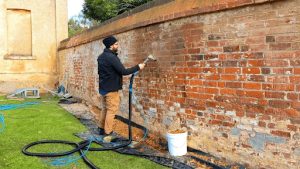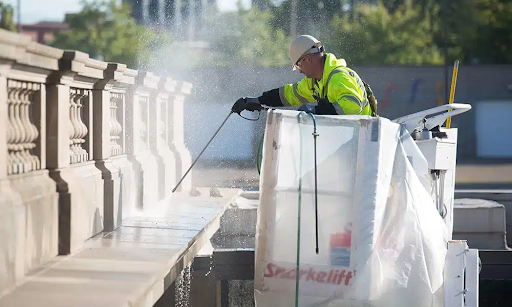In the silent elegance of ancient architecture, masonry structures stand as testaments to human craftsmanship. However, the hands of time, coupled with environmental adversities, often leave these structures marred by dirt, pollutants, and biological growth. Enter chemical cleaning, a sophisticated yet indispensable method that delves into the science of masonry preservation, unlocking the secrets of restoration.
Understanding Masonry Degradation
Masonry, with its stoic demeanor, is not impervious to the relentless forces of nature. Common contaminants, ranging from atmospheric pollutants to organic matter, settle on these surfaces, initiating a gradual but perceptible degradation. Environmental factors, including weather patterns and temperature fluctuations, contribute to the wear and tear of these structures, underscoring the need for vigilant maintenance to thwart irreversible damage.
Chemical Cleaning: An Overview
At the heart of masonry restoration lies chemical cleaning, a technique designed to breathe new life into weathered surfaces. This method involves the strategic application of chemical agents that dissolve, emulsify, or lift contaminants from the masonry substrate. Unlike mechanical methods, chemical cleaning offers a delicate touch, ensuring the preservation of the original surface while eradicating unsightly blemishes.
Chemical Cleaning Agents
The arsenal of chemical cleaning agents is vast and varied, each formulation tailored to combat specific contaminants. Acids, detergents, and solvents take center stage, with their unique properties interacting dynamically with the stubborn residues on masonry surfaces. The alchemy of these agents lies in their ability to break molecular bonds, liberating the masonry from the clutches of time and neglect.
Factors Influencing Chemical Cleaning Effectiveness
Success in chemical cleaning is contingent upon understanding the idiosyncrasies of both the masonry surface and the contaminants at play. Factors such as surface porosity and material composition wield significant influence, guiding the selection of the most appropriate chemical agents. Environmental conditions, including temperature and humidity, further mold the efficacy of these agents in a delicate dance of science and restoration.

Safety and Environmental Concerns
While chemical cleaning unveils the hidden splendor of masonry, it is imperative to tread cautiously. Adhering to safety guidelines ensures the well-being of restoration professionals and the longevity of the structure. Environmental concerns loom large, prompting a quest for eco-friendly alternatives that harmonize with the delicate balance of nature.
The Future of Chemical Cleaning in Masonry Preservation
As technology advances, so does the frontier of masonry restoration. Ongoing research endeavors promise even more sophisticated chemical cleaning solutions, marrying effectiveness with sustainability. Emerging trends in eco-conscious restoration underscore a shift towards methods that not only preserve our heritage but also tread lightly on the planet.
Conclusion
In the intricate dance between chemistry and architecture, chemical cleaning emerges as a choreographer of rejuvenation. This method, grounded in the principles of science, unveils the latent beauty of masonry while preserving the essence of time. As we stand at the cusp of a new era in restoration, the alchemy of chemical cleaning continues to evolve, ensuring that the legacy of our architectural marvels endures for generations to come.
At Marecki Masonry, we stand as guardians of architectural heritage, employing cutting-edge techniques like chemical cleaning to breathe life into the stones that tell stories of the past.

